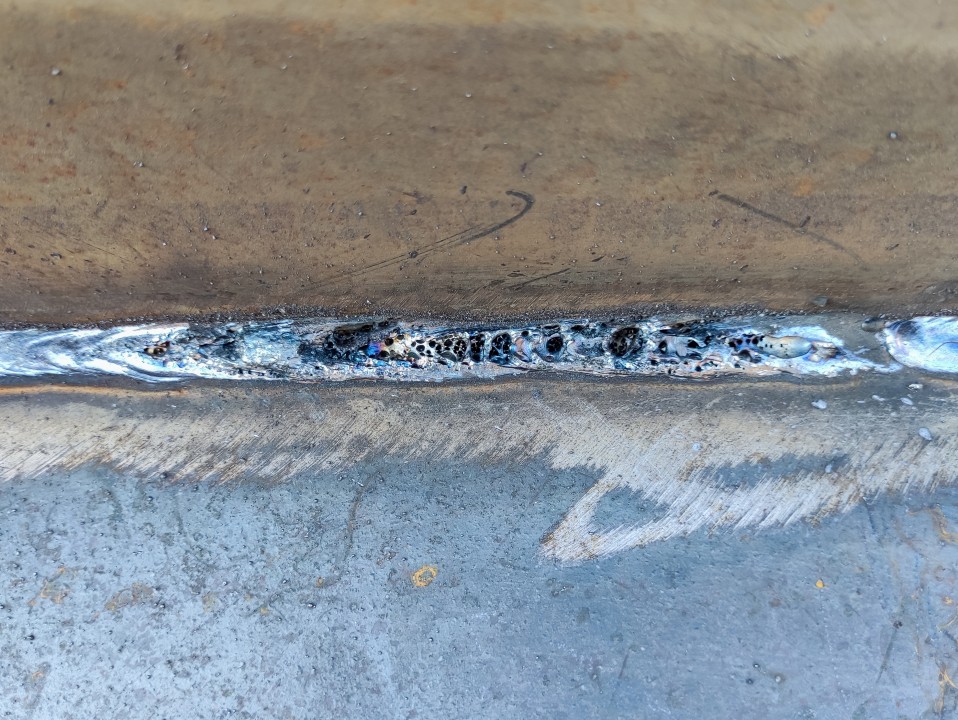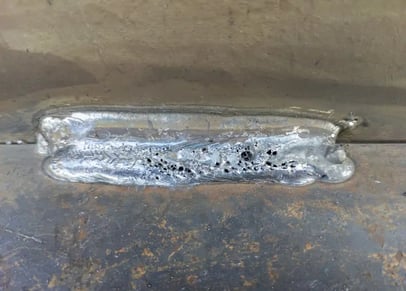Comprehensive Overview: What is Porosity in Welding and How to Prevent It
Comprehensive Overview: What is Porosity in Welding and How to Prevent It
Blog Article
The Scientific Research Behind Porosity: A Comprehensive Guide for Welders and Fabricators
Understanding the intricate devices behind porosity in welding is vital for welders and producers aiming for impressive craftsmanship. From the structure of the base materials to the details of the welding procedure itself, a multitude of variables conspire to either exacerbate or reduce the visibility of porosity.
Comprehending Porosity in Welding
FIRST SENTENCE:
Assessment of porosity in welding reveals important understandings right into the honesty and top quality of the weld joint. Porosity, defined by the visibility of cavities or voids within the weld steel, is an usual worry in welding procedures. These gaps, otherwise properly attended to, can compromise the structural integrity and mechanical buildings of the weld, leading to potential failings in the ended up item.

To detect and quantify porosity, non-destructive testing approaches such as ultrasonic screening or X-ray assessment are typically used. These techniques allow for the identification of internal issues without endangering the integrity of the weld. By assessing the dimension, form, and circulation of porosity within a weld, welders can make enlightened choices to improve their welding procedures and accomplish sounder weld joints.

Variables Affecting Porosity Development
The event of porosity in welding is affected by a myriad of variables, ranging from gas shielding effectiveness to the complexities of welding specification settings. One essential factor contributing to porosity formation is poor gas securing. When the securing gas, generally argon or CO2, is not effectively covering the weld pool, atmospheric gases like oxygen and nitrogen can pollute the liquified metal, causing porosity. In addition, the cleanliness of the base materials plays a significant role. Pollutants such as corrosion, oil, or dampness can evaporate throughout welding, producing gas pockets within the weld. Welding parameters, consisting of voltage, existing, travel rate, and electrode type, likewise influence porosity development. Utilizing improper setups can produce too much spatter or heat input, which subsequently can cause porosity. The welding method employed, such as gas steel arc welding (GMAW) or secured steel arc welding (SMAW), can influence porosity formation due to variants in warmth circulation and gas coverage. Comprehending and regulating these elements are essential for decreasing porosity in welding operations.
Effects of Porosity on Weld High Quality
Porosity development significantly jeopardizes the architectural honesty and mechanical buildings of bonded joints. When porosity exists in a weld, it produces voids or tooth cavities within the product, reducing the overall strength of the joint. These voids serve as tension concentration factors, making the weld extra susceptible to breaking and failure under load. The presence of porosity also deteriorates the weld's resistance to deterioration, as the entraped air or gases within deep spaces can react with the surrounding environment, resulting in degradation in time. Additionally, porosity can impede the weld's capability discover this to stand Read Full Article up to stress or effect, further jeopardizing the overall high quality and dependability of the welded structure. In vital applications such as aerospace, automotive, or architectural building and constructions, where safety and security and durability are paramount, the detrimental results of porosity on weld top quality can have serious consequences, emphasizing the relevance of reducing porosity via correct welding strategies and treatments.
Strategies to Reduce Porosity
Furthermore, making use of the appropriate welding parameters, such as the appropriate voltage, current, and travel rate, is important in protecting against porosity. Keeping a regular arc length and angle during welding likewise aids decrease the likelihood of porosity.

Utilizing the suitable welding technique, such as back-stepping or utilizing a weaving motion, can likewise help disperse warmth uniformly and decrease the opportunities of porosity development. By applying these strategies, welders can successfully decrease porosity and create high-quality bonded joints.

Advanced Solutions for Porosity Control
Applying cutting-edge modern technologies and cutting-edge techniques plays a pivotal function in attaining premium control over porosity in welding processes. Furthermore, using advanced welding methods such as pulsed MIG welding or changed atmosphere welding can likewise assist mitigate porosity issues.
One more sophisticated remedy entails using advanced welding tools. Using devices with built-in attributes like waveform control and innovative power sources can improve weld quality and lower porosity dangers. Moreover, the execution of automated welding systems with specific control over parameters can significantly lessen porosity flaws.
Furthermore, incorporating advanced surveillance and assessment innovations such as real-time X-ray imaging or automated ultrasonic screening can help in discovering porosity early in the welding process, permitting immediate corrective activities. Generally, integrating these advanced services can considerably boost porosity control and improve the total high quality of welded components.
Verdict
In verdict, comprehending the science behind porosity in welding is vital for welders and producers to produce high-grade welds. By identifying the variables affecting porosity formation and executing methods to minimize it, welders can enhance the total weld high quality. Advanced services for porosity control can better improve the welding process and make certain a my website solid and reliable weld. It is essential for welders to continually inform themselves on porosity and carry out ideal methods to accomplish optimum results.
Report this page